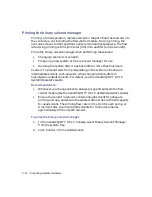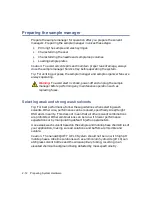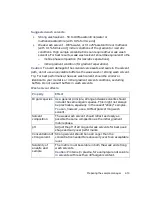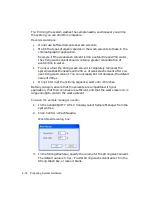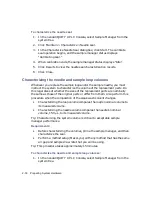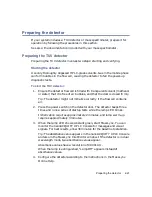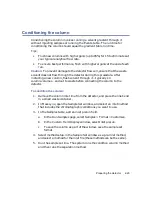
Preparing the sample manager
2-13
Suggested wash solvents:
•
Strong wash solvent
—
50 to 100% acetonitrile/water or
methanol/acetonitrile (with 0.1% formic acid)
•
Weak wash solvent
—
100% water, or 0 to 25% acetonitrile or methanol
(with 0.1% formic acid); initial conditions of the gradient or isocratic
conditions. High sample concentrations can require other weak wash
solvents. For best results, weak wash solvent should be equivalent to the
–
mobile phase composition (for isocratic separations).
–
initial gradient condition (for gradient separations).
Caution:
To avoid damage to the solenoid valve seats and seals in the solvent
path, do not use a nonvolatile buffer as the weak wash or strong wash solvent.
Tip:
For best performance, the weak wash solvent should be similar or
identical to your isocratic or initial gradient solvent conditions, excluding
buffers. Do not use salt buffers in wash solvents.
Wash solvent effects:
Property
Effect
Organic species
As a general principle, strong and weak solvents should
include the same organic species. This might not always
be practicable, especially in the case of “sticky” samples.
You can, however, use a 100% organic strong wash
solvent.
Solvent
composition
The weak wash solvent should reflect as closely as
possible the same composition as the initial gradient
mobile phase.
pH
Adjust the pH of strong and weak solvents for best peak
shape and carryover performance.
Concentration of
strong solvent
Strong solvent should be no stronger than the
concentration needed to reduce carryover to an acceptable
level.
Solubility of
analyte and
sample
The matrix must be soluble in both the weak and strong
wash solvents.
Caution:
Proteins (in plasma, for example) are not soluble
in solvents with less than 40% organic content.
Summary of Contents for nanoACQUITY UPLC
Page 7: ...vii ...
Page 16: ...xvi ...
Page 20: ...xx Table of Contents ...
Page 32: ...1 12 System Overview ...












